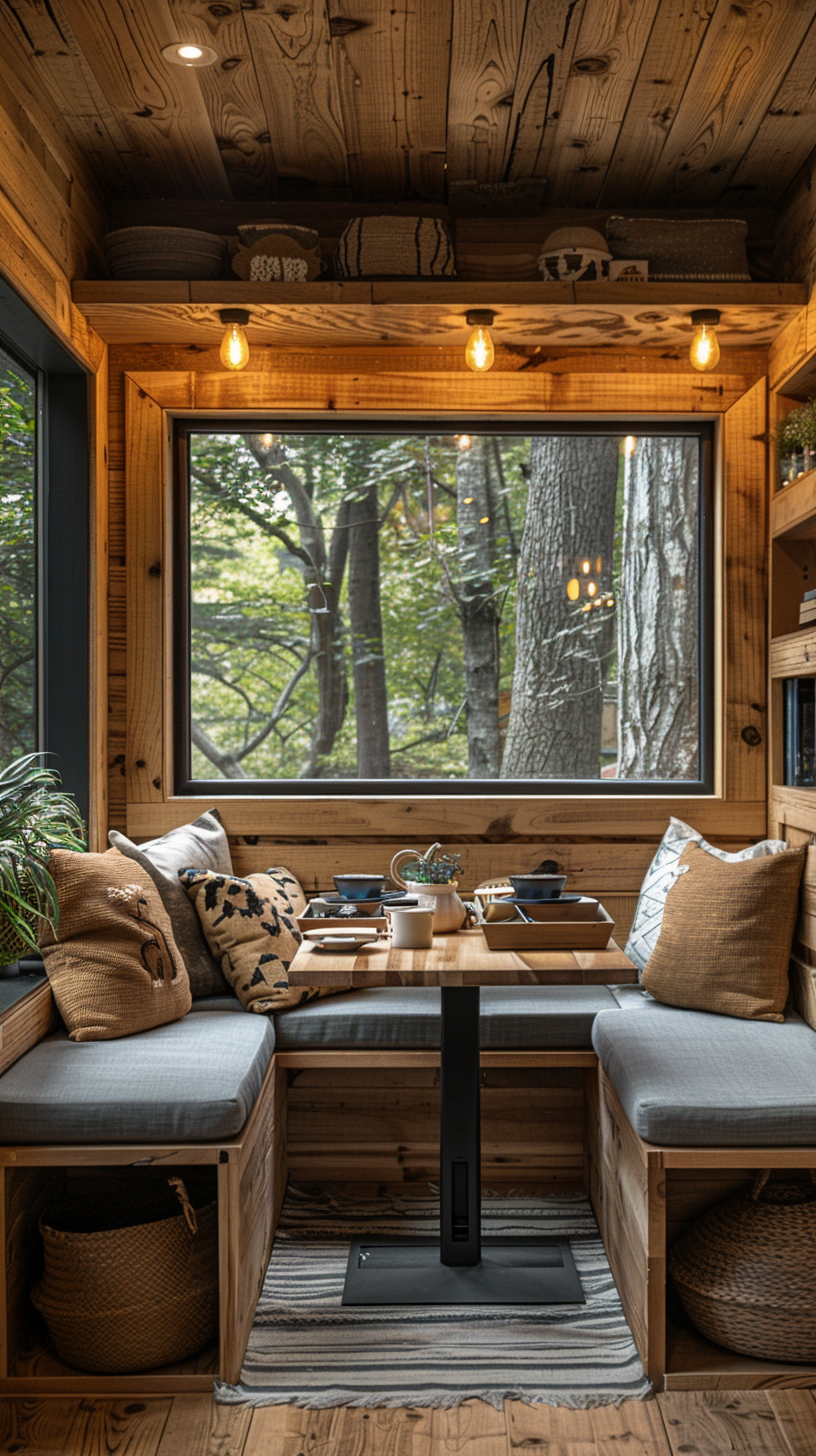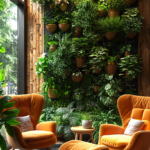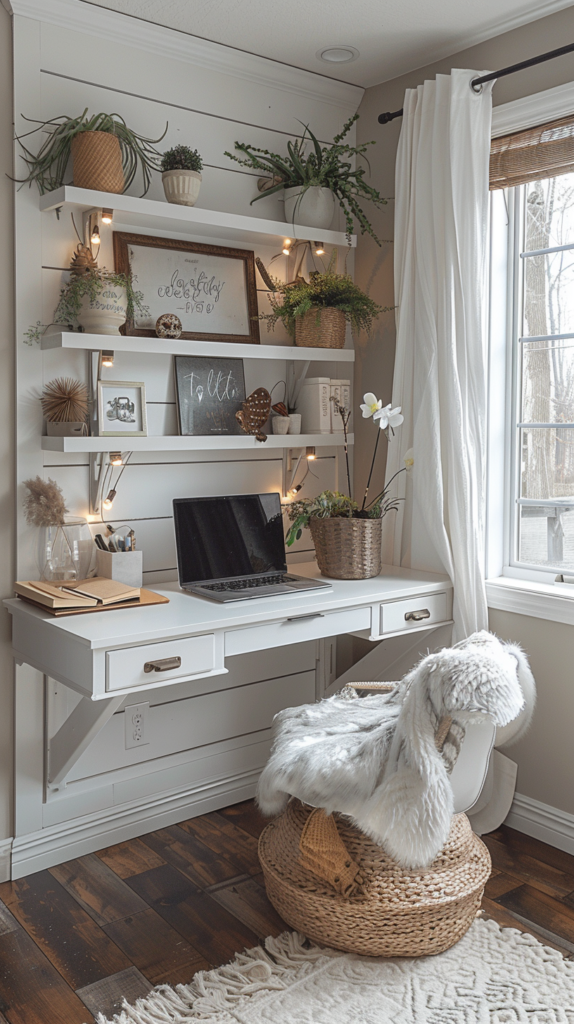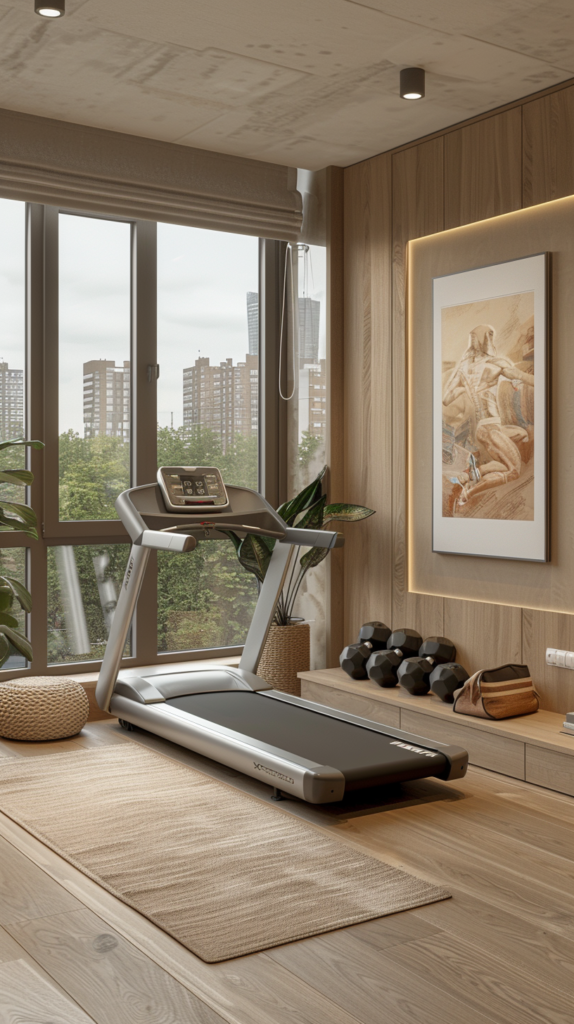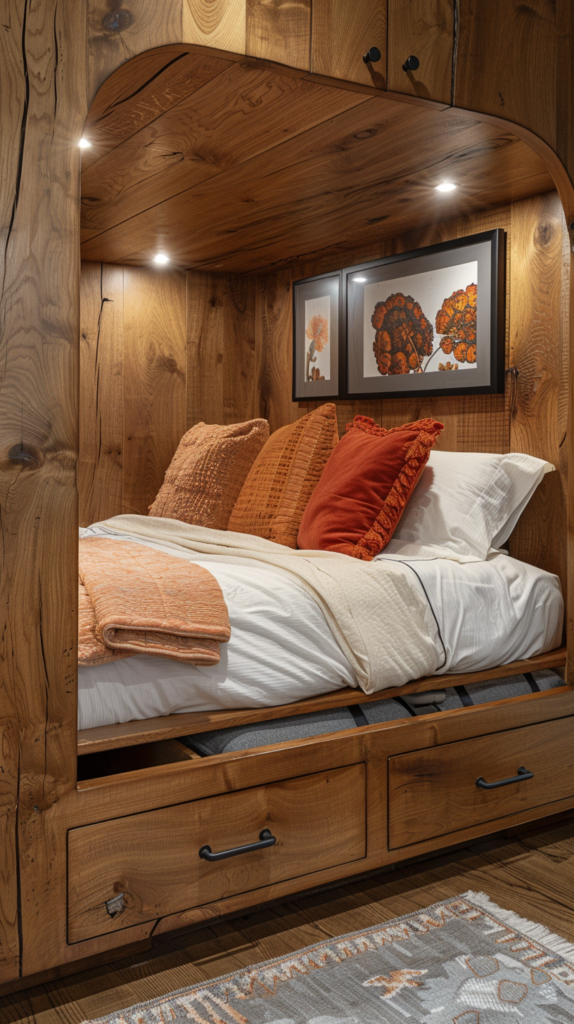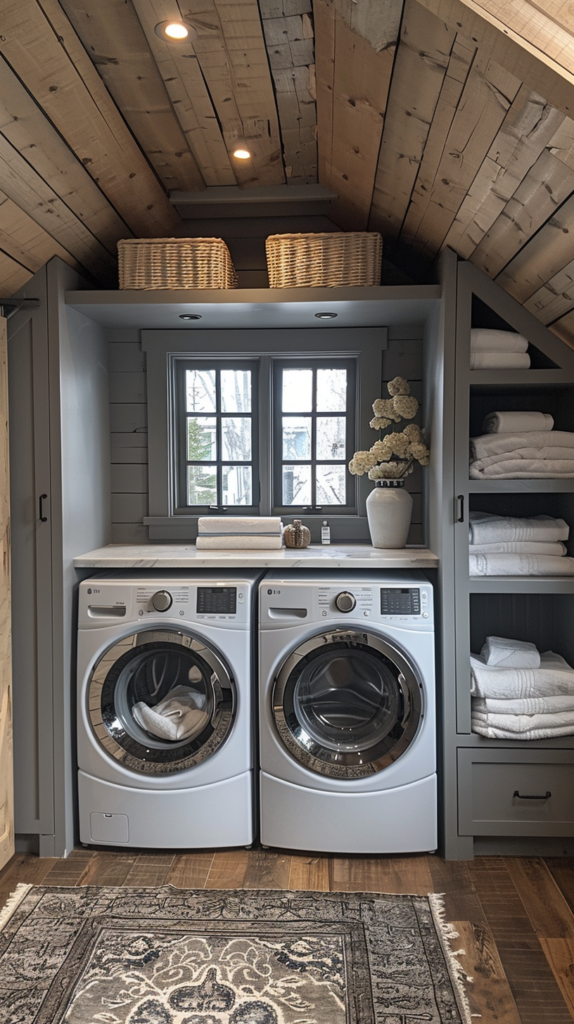Introduction
Living in a tiny home often means finding creative ways to maximize every inch of space. Dining areas can be particularly challenging to design due to their need for functionality and comfort within limited square footage. Fortunately, there are numerous space-saving solutions that can help you create a stylish and efficient dining area in even the smallest of homes. This guide will explore innovative ideas and practical tips for designing a compact dining space that doesn’t sacrifice style or function.
Understanding Your Space
1. Measure Your Dining Area
Accurate Measurements
Start by measuring your dining area carefully. Determine the available space for your table and chairs, and consider how much room you need for movement. Accurate measurements will help you choose appropriately sized furniture and layout options.
Consider Flow and Access
Think about the flow of the room and how you’ll access the dining area. Ensure there’s enough space for people to sit down comfortably and that there’s room for traffic to move around without obstruction.
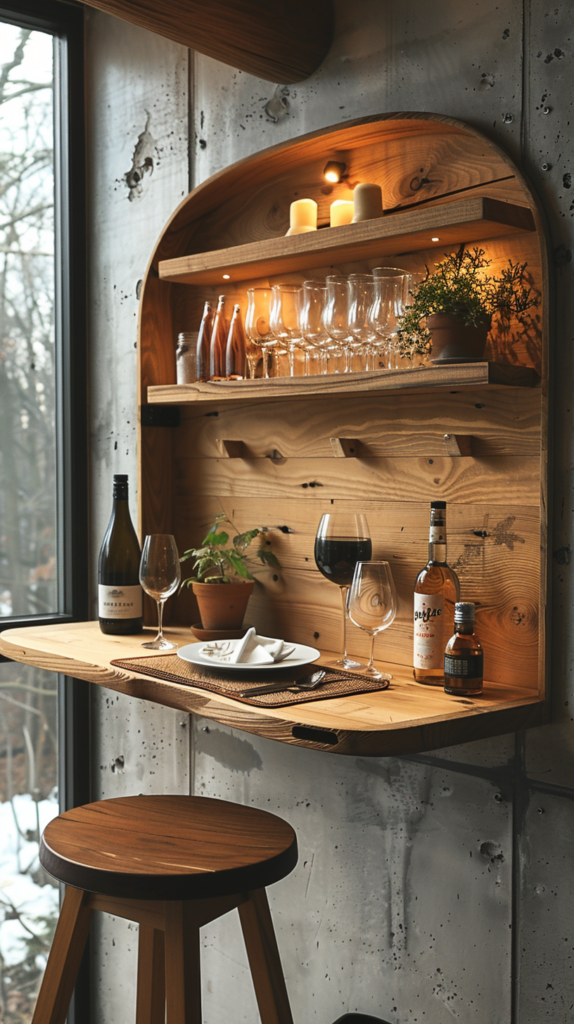
2. Define Your Needs
Determine Seating Capacity
Decide how many people you need to seat regularly. For small spaces, focus on accommodating the number of people you typically entertain. Opt for versatile seating solutions that can be adjusted or expanded as needed.
Assess Storage Requirements
Consider your storage needs for dining essentials. Do you need space for dishes, cutlery, or placemats? Incorporate storage solutions into your dining area to keep everything organized and easily accessible.
Choosing the Right Furniture
1. Opt for Compact Tables
Drop-Leaf Tables
Drop-leaf tables are perfect for small dining areas. They offer flexibility by allowing you to extend or collapse the table depending on your needs. When not in use, you can fold down the leaves to save space.
Foldable Tables
Foldable tables provide an excellent space-saving option. They can be easily folded and stored away when not in use. Look for designs that are sturdy and stylish, so they don’t detract from your decor.

2. Consider Multi-Functional Furniture
Tables with Built-In Storage
Tables with built-in storage offer dual functionality. Choose a dining table that includes drawers or shelves for storing utensils, napkins, or other dining essentials. This added storage helps keep your space organized.
Bench Seating
Bench seating can save space and provide additional storage if the bench includes hidden compartments. It can be placed against the wall to maximize floor space and accommodate more people.

Creative Dining Solutions
1. Wall-Mounted Tables
Fold-Down Tables
Wall-mounted, fold-down tables are ideal for tiny homes. These tables can be folded up against the wall when not in use, freeing up floor space. They are perfect for small kitchens or dining nooks.
Expandable Wall Tables
Expandable wall tables offer flexibility by allowing you to extend the table when needed. They can be mounted at a height that’s convenient for both dining and other uses, such as a workspace.
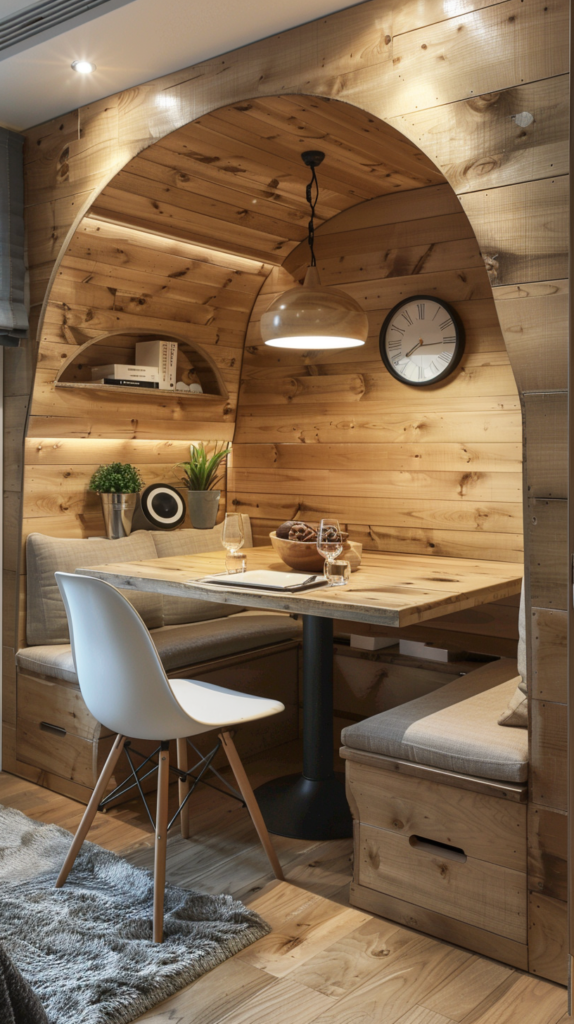
2. Use Vertical Space
Hanging Storage
Hanging storage solutions such as racks or shelves can help maximize vertical space. Install shelves above your dining area to store dishes, glasses, or decor items. This approach frees up valuable counter space.
Wall Hooks
Install wall hooks to hang items like aprons or kitchen utensils. This keeps your dining area clutter-free and ensures that everything you need is within reach.
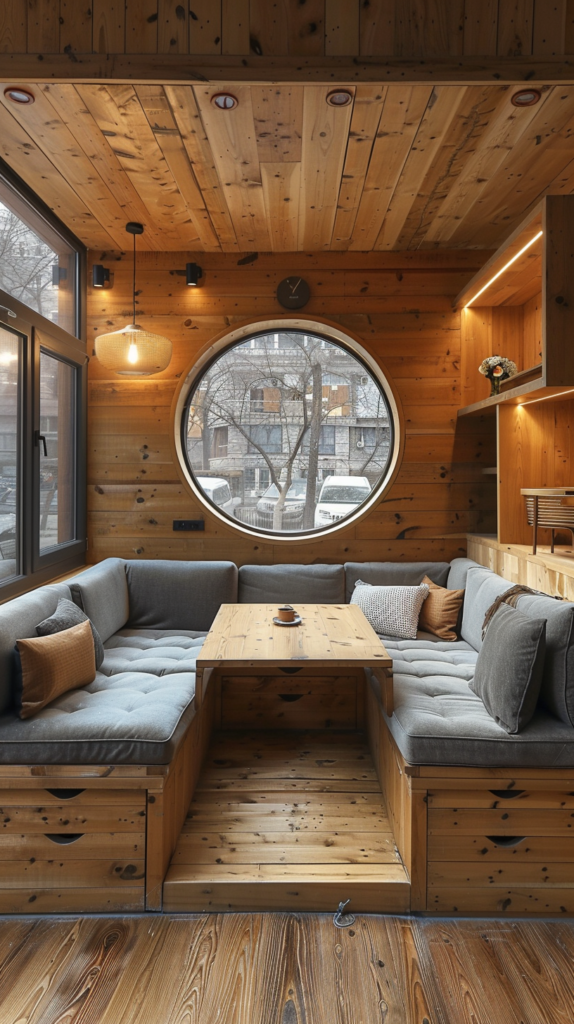
Design Tips for Small Dining Areas
1. Choose Light Colors and Patterns
Light-Reflecting Colors
Opt for light colors in your dining area to create the illusion of more space. Light colors reflect natural light and make the room feel more open and airy. Consider white, pale gray, or soft pastels for your dining furniture and decor.
Small Patterns
Choose small patterns or solid colors for your dining tablecloths, napkins, or cushions. Small patterns prevent visual clutter and help maintain a clean, cohesive look in a compact space.

2. Incorporate Mirrors
Mirrored Surfaces
Mirrors can enhance the sense of space in a small dining area. Consider using mirrored furniture or decor pieces to reflect light and create the illusion of a larger room. Mirrors can also add a touch of elegance to your dining space.
Mirror Wall Panels
Install mirror wall panels to amplify light and make your dining area appear more spacious. Choose panels with a sleek design that complements your overall decor and enhances the room’s aesthetic.
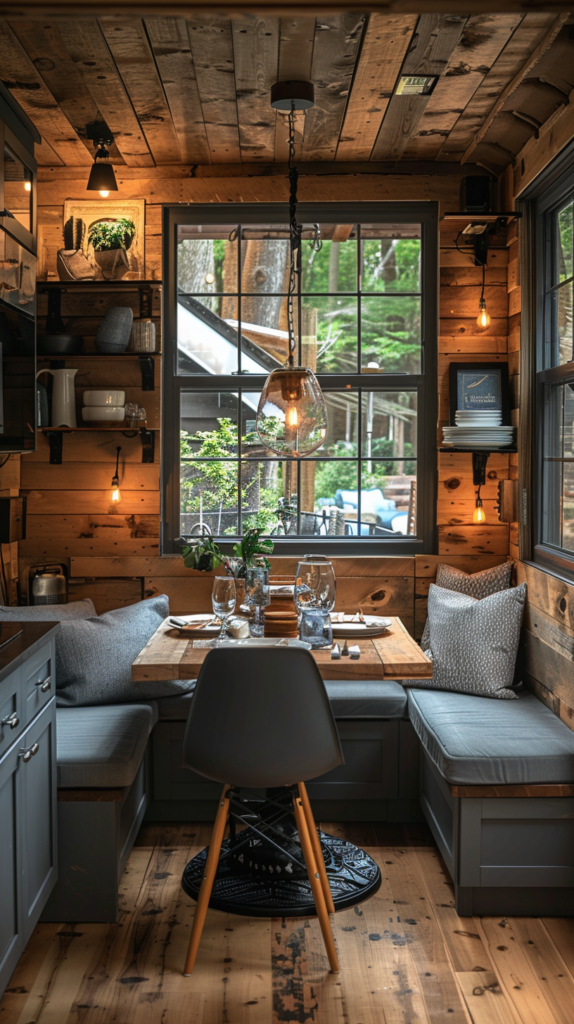
Storage Solutions
1. Integrated Storage Solutions
Cabinets with Dining Areas
Incorporate cabinets with integrated dining areas for a seamless look. These cabinets often feature built-in tables or extendable surfaces, combining storage with functionality. They are ideal for small kitchens or dining rooms.
Multi-Use Furniture
Select multi-use furniture that serves both as seating and storage. For example, a dining bench with storage compartments underneath can provide extra space for storing table linens or kitchen supplies.
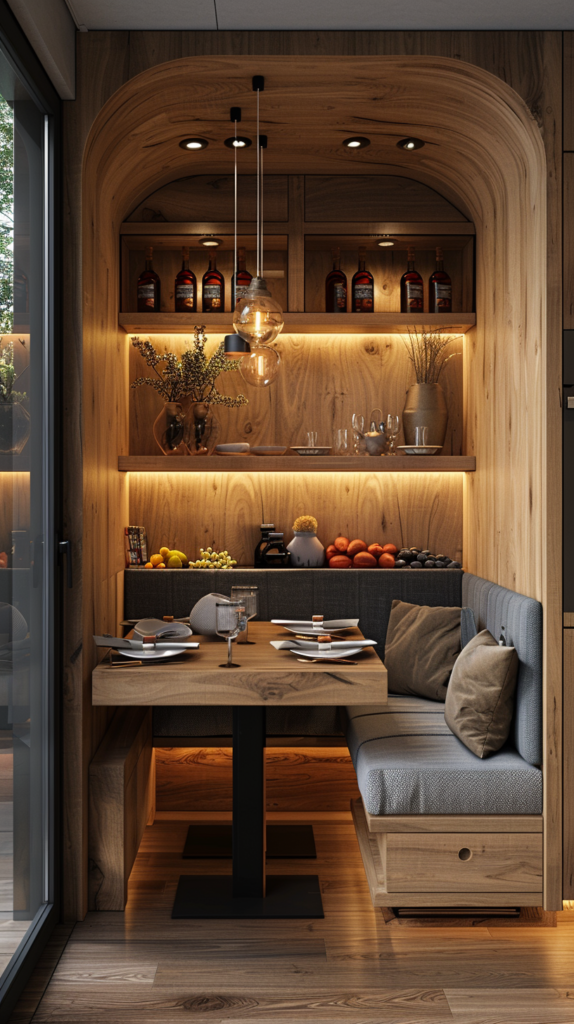
2. Under-Table Storage
Storage Baskets
Place storage baskets or bins under the table to keep items organized. These baskets can hold everything from napkins to small kitchen tools and are easily accessible.
Rolling Carts
Use rolling carts for additional storage and flexibility. Place the cart near the dining area to hold dishes, drinks, or other essentials. Rolling carts can be moved out of the way when not in use.

Decor and Ambiance
1. Create a Cozy Atmosphere
Soft Lighting
Use soft lighting to create a cozy dining atmosphere. Consider pendant lights or wall sconces to add warmth and style to your small dining area. Adjustable lighting options allow you to set the mood for different occasions.
Table Linens and Accessories
Incorporate table linens and accessories to enhance the dining experience. Choose placemats, table runners, and napkins in coordinating colors and patterns. These accessories add a touch of style and make the dining area feel more inviting.
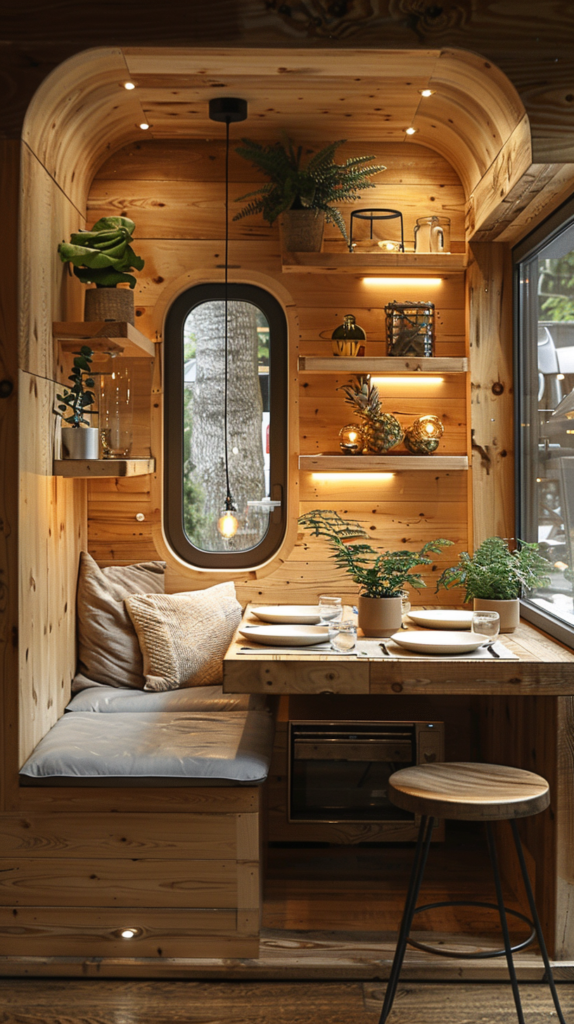
2. Add Personal Touches
Decorative Elements
Add decorative elements such as artwork or plants to personalize your dining area. Choose items that complement your decor and reflect your style. Personal touches make the space feel unique and comfortable.
Seasonal Decor
Incorporate seasonal decor to keep the dining area fresh and interesting. Change out tablecloths, centerpieces, or artwork according to the season or holiday. This keeps the space dynamic and enjoyable throughout the year.
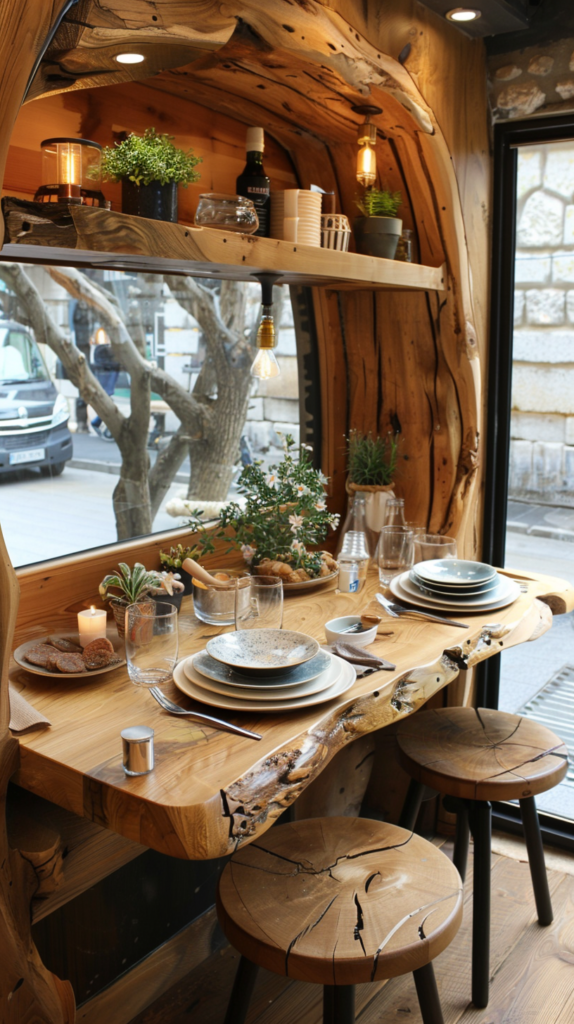
Conclusion
Creating a functional and stylish dining area in a tiny home requires thoughtful planning and clever design. By choosing the right furniture, incorporating creative solutions, and paying attention to design details, you can transform even the smallest dining space into a welcoming and efficient area. Embrace these space-saving tips to enjoy a comfortable dining experience without sacrificing style.
FAQs
What types of tables are best for small dining areas?
Drop-leaf tables, foldable tables, and wall-mounted tables are excellent choices for small dining areas. They offer flexibility and can be adjusted based on your needs.
How can I maximize storage in a small dining area?
Use multi-functional furniture, such as tables with built-in storage or bench seating with hidden compartments. Incorporate hanging storage and under-table baskets for additional organization.
What color schemes work best for small dining areas?
Light colors, such as whites, beiges, and pastels, work best for small dining areas. They reflect light and create a more open feel. Small patterns also help maintain a clean look.
How can I make a small dining area feel cozy?
Incorporate soft lighting, decorative table linens, and personal touches like artwork or plants. Create a warm ambiance with adjustable lighting and comfortable seating.
Are there any tips for choosing curtains for a small dining area?
Opt for light, airy curtains that allow natural light to filter through. Choose simple designs and light colors to enhance the space. Consider curtains that can be easily opened or closed to adjust light and privacy as needed.

